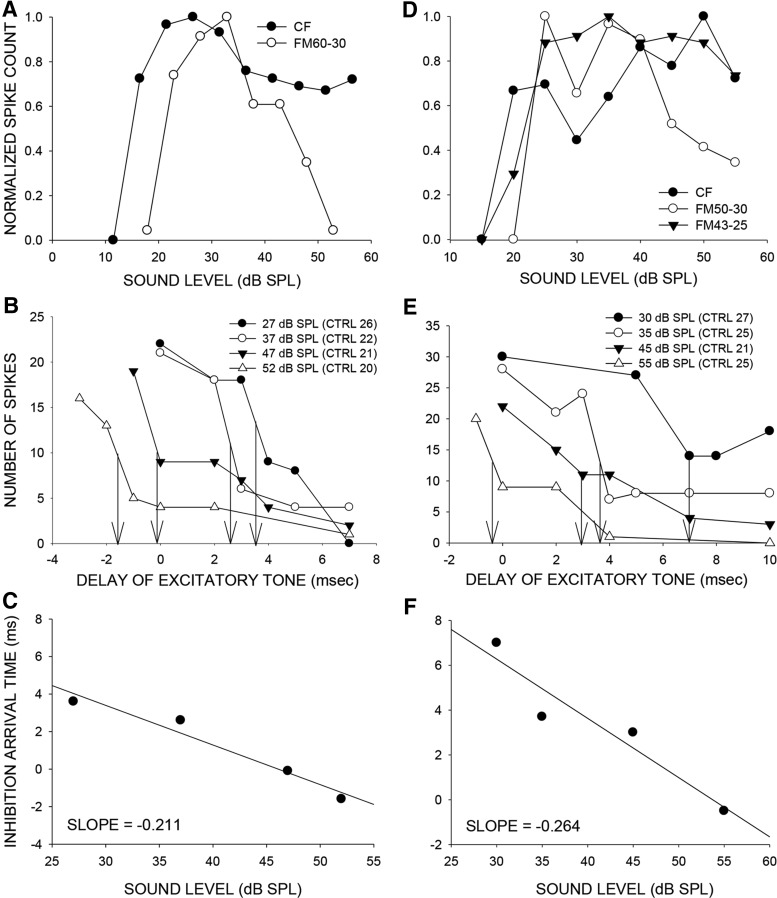Figure 9.
Timing of high-frequency inhibition relative to excitation enhances level selectivity for FM sweep over CF tone. A, Example neuron with a higher %TO for the FM sweep (FM60-30) than CF tone (42 kHz) over the range of levels tested. B, Family of two-tone inhibition curves recorded at different sound levels of the two tones for the same neuron in A. The excitatory tone was presented at CF. The numbers in parentheses (CTRL, control) indicate the response to the CF tone presented alone at each sound level. In the two-tone paradigm, the excitatory tone was presented along with an inhibitory tone (46 kHz) from the high-frequency sideband. The delay between the two tones was adjusted as a variable (abscissa) and the response (number of spikes to 20 repetitions of the two tones at a given delay) was measured (ordinate) to generate each curve. Zero delay indicates simultaneous onset, positive delays indicates the excitatory tone was delayed, and negative delays indicates the inhibitory tone was delayed. The level of both tones was changed together as another variable generating the family of four curves. The neural response to the two-tone combination declined below 50% of control excitatory tone alone response (CTRL) at a specific delay (noted as 50% arrival time in the text and marked by the vertical arrows in the figure) in a level-dependent manner. For this neuron, the 50% arrival time systematically becomes faster with increasing stimulus level. For the two highest levels tested, the inhibition in fact occurs even when the inhibitory tone is delayed relative to the excitatory tone indicating that inhibition arrives faster than excitation at these delays. A downward FM sweep presented at these levels will evoke strong inhibition resulting in enhanced level selectivity for FM sweep than CF tone as seen in A. C, A linear regression between the sound level of the two tones versus the 50% arrival time provides the slope that quantifies the rate of change of arrival time with level (-0.211 ms/dB SPL in this neuron). D--F, A second example neuron in which %TO was higher for the FM sweep (FM50-30) than CF (37 kHz) tone. Explanations are similar to the neuron in A--C. The inhibitory tone used was 46 kHz. An additional test was conducted in this neuron to determine the necessity of the high-frequency sideband for level selectivity. For this purpose, a downward sweep that started inside the tuning curve (FM43-25) and thereby excluded the high-frequency sideband was used. When the FM43-25 sweep was used, the level selectivity was similar to that obtained with the CF tone, indicating that the high-frequency sideband shapes level selectivity in this neuron.

